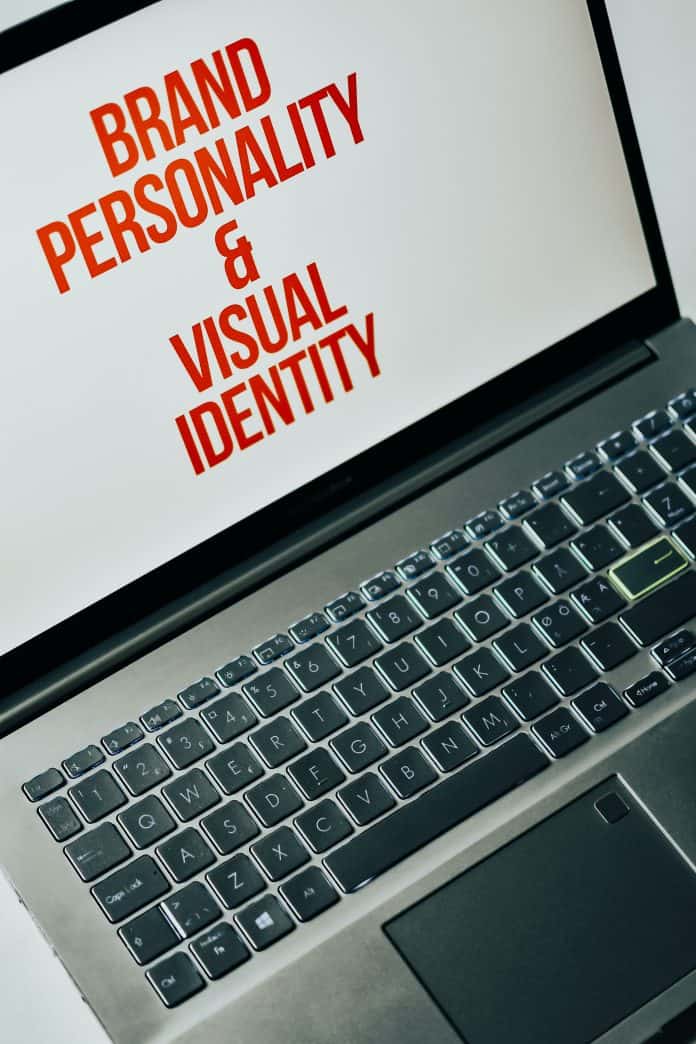You want potential customers who view your logo, brochures, advertisements, or other marketing materials to immediately recognize and connect with your brand. Any business owner knows this is necessary to distinguish a company from its competitors and maintain a healthy market share.
This is where visual identity comes into play. Every successful and well-known brand has a strong visual identity that strategically positions them in the minds of their target audience and enhances their greater public image. These visual identities are ingrained in the minds of consumers, whether they are aware of it or not.
Almost everyone recognizes Disney, for example, and associates certain images with the brand, including castles, Mickey Mouse, and even fireworks. Most of us can also immediately identify the infamous Waltograph font upon seeing it.
This is the result of a strong visual brand identity — and ultimately, every business strives to achieve this level of consumer recognition.
So, how can you strengthen your visual brand identity? What exactly does the process involve? And what specific benefits can you expect to see? We’ll be answering these questions in just a moment. But first, it’s important to have a firm grasp on what visual identity is. Let’s take it from the top.
What is Visual Identity?
Anything potential customers might see and associate with your brand is part of your visual identity. Logos, images, fonts, colors, graphics, shapes — they all contribute to the perception of your brand. The more consistently and strategically these elements are utilized and presented to your target market, the more effective your visual identity will be.
The Importance of Visual Identity in Branding
What is visual identity’s purpose and is it truly necessary to invest time and resources into it?
We cannot overstate that when establishing a brand, identity visual impact is paramount. But, of course, you don’t have to take our word for it. Here are a few of the key advantages associated with having a strong visual identity:
- Customer Loyalty
Customers are more likely to continue doing business with your company long term if they come to know and trust you. Whether consciously or unconsciously, people perceive brands with strong visual identities as more credible and trustworthy than those without. This is why consistent brand presentation has been shown to increase revenue by 23 percent. Your potential customers want to trust you, but first they need to become familiar with you — and that’s exactly what your visual identity achieves.
- Social Engagement
60 percent of people recognize a brand based on its visual style. This is particularly relevant with regards to social media, where visual content reigns supreme. Producing social media content that has a cohesive aesthetic will not only make your company page visually appealing but it will also build brand awareness — expanding your audience and moving your followers further along in your sales funnel.
- Perceived Quality
People perceive brands with notable and consistent visual identities to have higher standards of excellence. Visual elements like packaging, website design, and billboards all contribute to this perception. When these elements are contemporary and produced with exceptional quality, customers will presume you put the same level of care and attention into every aspect of your business.
The 5 Key Elements of Visual Identity
To adequately answer the question “What is visual identity?” we need to consider its various components. Your visual identity is the sum of many different parts, so just as you can’t truly understand what a clock is until you’ve taken it apart and analyzed its mechanical hardware, you can not completely understand visual identity until you’ve taken a closer look at each element.

The 5 elements are:
- Logo
Logos are the central component of visual identity. This is because 75 percent of consumers say logos are the most recognizable brand identifier (making it the most prominent of all the elements).
Making strategic design choices with regards to your company logo is an essential aspect of appealing to your target market and controlling how your brand is perceived. Remember, 60 percent of consumers will avoid a brand with a logo they find odd, ugly, or unappealing. If you want a strong visual identity, you’ll need a strong logo design — no questions asked.
- Typography
Did you know consumers associate different fonts with different emotions? Serif fonts, for example, are associated with feelings of stability and trustworthiness, while cursive handwritten fonts evoke a sense of creativity or romance.
This is why choosing the ideal font is such a critical aspect of visual identity. Without the right fonts, your marketing materials could convey the wrong message to your target market and have a counterproductive effect.
- Imagery
Visual identity in graphic design relies heavily on the use of imagery. The photos you use in print materials, on your website, or in advertisements all impact how your brand is perceived. Plus, visual content is incredibly effective. We know content with relevant images gets 94 percent more views than content without, and that 75 percent of consumers are inspired to make a purchase based on visual content alone.
This is why it’s crucial for brands to select images that reflect the personality and values of their brand, or that capture the experience they provide to consumers.
- Color Scheme
Did you know that consistent color use increases brand recognition by up to 80 percent? Or that that colors affect mood, behavior, and even the stress levels of your customers?
Yellow, for example, is psychologically associated with feelings of happiness and positivity, while red is associated with excitement, action, and desire.
Remember, 85 percent of consumers say colors influence their buying decision, so the colors you use as part of your brand visual identity should be selected with intention and careful consideration.
- Illustrations, Graphics, and Icons
Images aren’t the only form of visual representation a brand has at its disposal. When asking ourselves “What is visual identity in graphic design?” we also need to account for illustrations, graphics, and icons. These elements also become associated with your brand in the minds of consumers.
Airbnb, for instance, uses illustrations across its website. The illustrations feature a diverse range of people and highlight the brand’s commitment to inclusion and representation.
Remember that all of the visual components you use will play a role in how your target demographic responds to your brand and never underestimate the significance of each element.

How to Create a Visual Identity That Shines
Now that you have the basics down, let’s discuss how you can establish a visual brand identity that perfectly captures the essence of your business and resonates with your intended audience.
Here are five steps to follow when creating your visual identity:
- Create a Detailed Buyer Persona
A buyer persona is simply a fictionalized characterization of your ideal customer. Your buyer persona should detail the pain points your ideal customers experience, what motivates them to make a purchase, and what demographic they belong to.
To create your buyer person you’ll need to ask questions like:
- What industries do my ideal customers work in?
- What geographic location(s) do they live in?
- What is their age range?
- What is their desired customer service experience?
- What problem are they trying to solve?
- What is their preferred purchasing method?
- What is their average family income?
- Write a Branding Brief
A branding brief is a document that provides a high-level overview of your brand. It contains your core values, mission, vision, your brand story, and your unique selling proposition.
Completing your branding brief prior to building your visual identity will ensure you remain true to the fundamentals of your business and allow you to make confident decisions regarding how your brand should look and feel to your potential customers.
- Research Your Competition
It’s always best to examine the visual identities of your rivals before solidifying your own. The last thing you want is to decide on visual elements that closely resemble those of your competitors.
A huge part of strategic positioning is knowing who you’re up against so you can make decisions that distinguish your business and set it apart.
Take Coca-Cola and Pepsi, for example. These brands look nothing alike — a branding decision that’s anything but coincidental. Consumers associate red with Coca-Cola and blue with Pepsi, giving each its own clear-cut identity. If Pepsi were to rebrand and primarily use the color red, it would become difficult for consumers to separate their brand from that of their top competitor.
This is why knowing who the other major players are within your industry is so critical. You need to create a visual identity that is unique and perceivably different from anything else on the market.
- Build Your Visual Brand
After you have completed the steps above, it’s time to begin choosing the design elements that will define your visual identity. Creating a mood board is an excellent practice for this phase of the process.
Mood boards are collages of various images, colors, and graphic components that allow you to visualize how the different elements of your visual identity will work together. They also serve as a reference point for all of your future branding decisions.
Having a single place where you can view the collection of your visual branding elements makes it easier to imagine what your marketing materials and other assets will look like when they are finalized.
- Strategically Showcase Your New Identity
Now it’s time for the fun part. It’s finally time to unveil your new brand and share it with the world. Typically this involves transferring your mood board into a website visual identity, as well as creating print materials, social media content, and other promotional assets that align with your new brand.
Remember, consistency is key. Your web site visual identity, as well as any other fact of your marketing efforts, should all be in alignment with the brand you have established. You want to make it as straightforward as possible for potential customers to identify your brand and connect the dots.
Build Your Visual Identity with Printivity
From brochures and postcards, to custom shipping boxes and menu printing — we make it easy for brands to produce the high-quality marketing materials they need to confidently build their visual identities. Plus our 100% satisfaction guarantee provides complete peace of mind. If you’re not satisfied with your final result, we’ll replace it. Get started with our graphic design services today!





